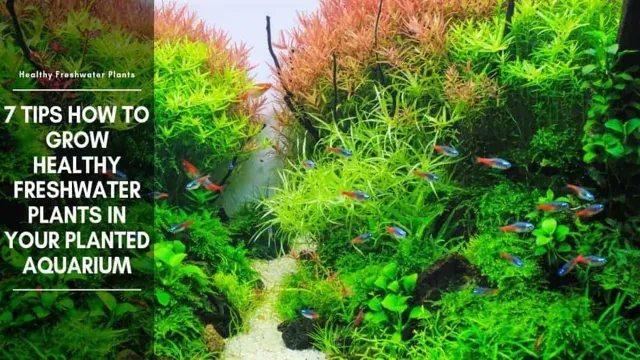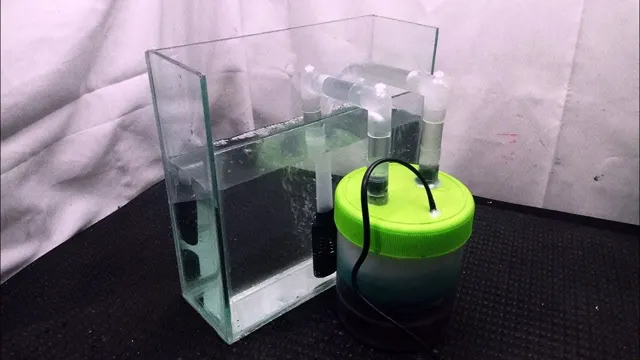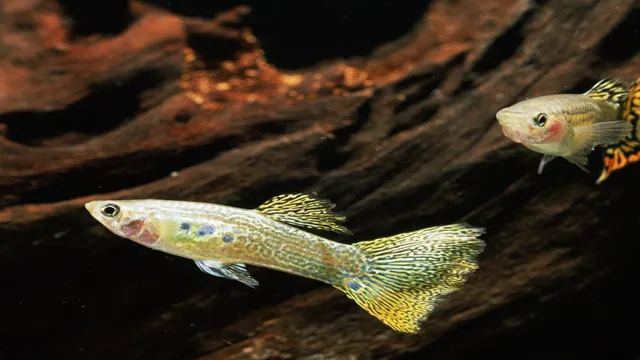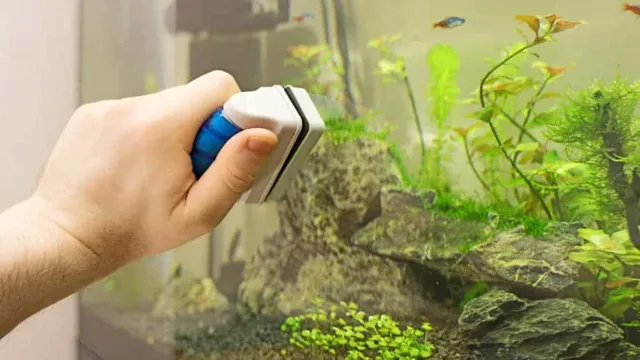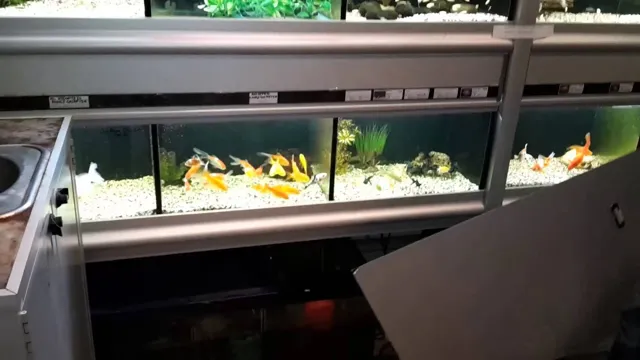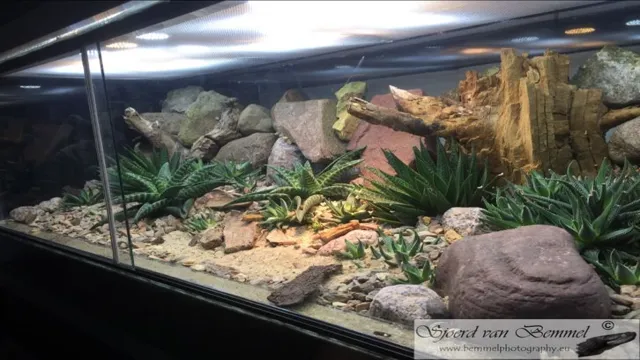Plants serve as a natural decoration in aquariums, providing an aesthetically pleasing feel to the tank while also promoting a healthy environment for your fish. However, maintaining aquatic plant life can be daunting if you don’t have the right knowledge. From choosing the right plants to creating the perfect lighting conditions, there are several factors to consider to keep your aquarium plants healthy and thriving.
In this article, we’ll explore tips and tricks on keeping plants in an aquarium, giving you the knowledge and confidence you need to create a beautiful aquatic environment for your fish. So, let’s dive right in!
Choose the Right Plants
If you’re looking to keep plants alive in your aquarium, it’s essential to choose the right ones. Not all plants are suitable for aquatic environments, so it’s important to do your research before selecting which plants to add. Some popular aquatic plants include java ferns, moss, and anubias.
These plants are relatively easy to care for and don’t require high lighting or specific water conditions. However, if you’re looking for something a little more challenging, you could try aquatic grasses like dwarf hairgrass or carpet plants like Monte Carlo. These types of plants require more maintenance and specific water parameters, but can add a stunning visual element to your aquarium.
Additionally, it’s crucial to ensure that any plants you add to your aquarium are free of pesticides or other harmful chemicals that could harm your fish. By choosing the right plants, you can create a healthy and vibrant aquatic environment for your fish to thrive in.
Research plant species that are suitable for aquatic environments.
When it comes to aquatic environments, it’s crucial to choose the right plants to ensure the health and balance of the ecosystem. Some plant species are better suited for water environments than others, and researching which ones are suitable is key. Plants such as water lilies, duckweed, and hornwort are some of the most popular choices for freshwater environments and can provide a range of benefits such as oxygenation, nutrient cycling, and habitat for aquatic life.
However, it’s important to consider the specific needs of your aquatic system, such as light exposure and nutrient availability, when selecting plants. Ultimately, choosing the right plants will help create a thriving and sustainable ecosystem that benefits both the environment and its inhabitants.
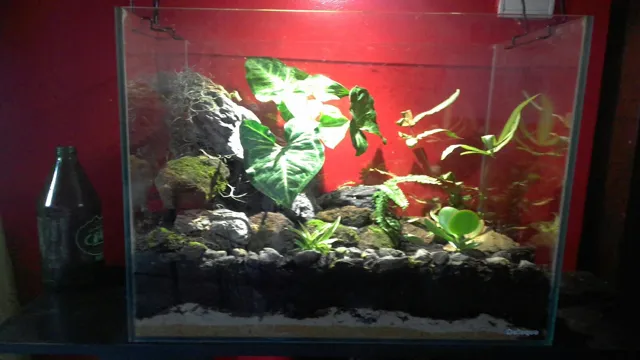
Consider factors such as lighting, water temperature, and pH levels.
When it comes to selecting the right plants for your aquarium, there are several factors that you must take into consideration. One of the most important considerations is the lighting in your tank. Different plants require different levels of light, so it’s important to choose ones that will thrive under the lighting conditions in your aquarium.
Additionally, you must consider the water temperature in your tank, as certain plants require specific temperature ranges to thrive. The pH levels in your aquarium’s water also play a significant role in the growth of your plants, so it’s crucial to choose plants that are suited to the pH level of your tank. Overall, selecting the right plants for your aquarium will require a bit of research, but it’s worth it to ensure that your plants are healthy and thrive in their aquatic home.
Don’t forget to consider each factor carefully and choose plants that are well-suited to your aquarium’s environment.
Provide Adequate Lighting
If you are looking to keep plants alive in your aquarium, providing adequate lighting is crucial. Plants need light for photosynthesis to occur and without it, they will not survive. The type of lighting needed will depend on the types of plants you have in your aquarium.
For low-light plants, basic fluorescent lighting will suffice, but for more demanding plants, you may need to invest in specialized lighting systems, such as LED lights. It’s essential to monitor the amount of light your plants receive. Too much or too little light can be harmful to your aquatic plants.
Keep in mind that plants also require a photoperiod, meaning that they need a certain period of darkness each day. By providing your plants with the right amount and type of light, you’ll be able to keep them healthy and thriving in your aquarium. So, make sure you invest in the right kind of lighting and ensure that your plants receive the right amount of light each day to keep them alive and vibrant.
Install a suitable light fixture over your aquarium.
Providing adequate lighting for your aquarium is vital for the health and well-being of your aquatic pets. Installing a suitable light fixture over your aquarium ensures that your fish and plants receive the proper amount and type of light needed to thrive. Moreover, proper lighting enhances the beauty of your aquarium and highlights the colors of your fish.
When selecting a light fixture, it is essential to consider the size and shape of your aquarium and the types of aquatic life you have. Different fish and plants require different types of lighting, and it’s important to choose a fixture that provides a suitable spectrum for your pets. It is also important to consider the intensity and duration of the light. (See Also: How to Add More Sand to Aquarium: Tips and Tricks for a Beautiful Aquatic Environment)
Fish require periods of darkness for rest, so a timer should be used to create a regular day and night cycle. Additionally, too much light can lead to algae growth, and it’s important to monitor and adjust the lighting schedule to prevent this. In conclusion, proper lighting is a crucial aspect of maintaining a healthy and vibrant aquarium.
By selecting the right fixture and managing the intensity and duration of light, you can provide the perfect environment for your aquatic pets to thrive.
Adjust light duration and intensity based on the needs of your plants.
If you want to create the perfect growing environment for your indoor plants, it’s important to provide them with adequate lighting. But it’s not just a matter of turning on a light and leaving it on all day. Different plants have different needs when it comes to light duration and intensity, and it’s up to you to adjust accordingly.
For example, some plants need more light during their vegetative phase, while others need more light during flowering. You also need to consider the intensity of the light, as too much can damage your plants, but too little can stunt their growth. It’s important to find the right balance and make adjustments as necessary to ensure your plants get the most out of their lighting.
By doing so, you’ll help your plants thrive and ensure a healthy and bountiful harvest.
Avoid placing your aquarium in direct sunlight.
Aquarium One of the most important factors to consider when setting up an aquarium is the lighting. Adequate lighting is necessary for the health and well-being of the aquatic plants and animals inside the tank. The intensity and duration of light should be appropriate for the type of fish and plants you have in your aquarium.
You can use a timer to ensure that your aquarium gets the right amount of light, and it also helps to mimic natural lighting cycles to keep your fish and plants healthy. While lighting is essential for your aquarium, it’s crucial to avoid placing it in direct sunlight to prevent algae from growing. Direct sunlight can also cause temperature fluctuations, which can harm your aquatic pets.
Therefore, it’s best to choose the appropriate type and intensity of lighting and avoid sunlight as much as possible. By providing the right lighting conditions, you can ensure that your aquarium thrives and remains healthy for years to come.
Maintain Water Quality
Maintaining water quality in an aquarium is crucial for the survival of aquatic plants like Alice. To keep plants healthy, it’s important to monitor and control the water’s pH levels, temperature, and nutrient levels. Test the water regularly to make sure it’s in the optimal range for your specific plant species.
If nutrient levels become too high, algae can take over and compete with the plants for resources. Consider adding live plants to the aquarium to help absorb excess nutrients and oxygenate the water. Regular water changes will also help prevent the buildup of waste and harmful chemicals.
Finally, make sure to properly clean and maintain equipment like filters and heaters to ensure they are functioning correctly. By taking these steps, you can keep your plants thriving and your aquarium looking beautiful.
Regularly test water parameters to ensure proper levels of nutrients and oxygen.
Maintaining water quality is a crucial aspect of keeping aquatic animals and plants healthy. Regularly testing water parameters such as pH, ammonia, nitrate, and oxygen levels is necessary to ensure that the environment remains conducive for your aquarium inhabitants. High levels of nutrients and oxygen aid in the growth of algae, which can be beneficial if you have herbivorous fish that rely on them for food.
However, excessive algae growth can cause oxygen depletion, leading to a decrease in water quality, which can harm your aquarium inhabitants. Testing water parameters also allows you to determine if there are any significant changes in your tank’s ecosystem that require immediate attention. By incorporating this into your regular maintenance routine, you can ensure that your aquarium inhabitants remain healthy and happy.
Always remember, a healthy environment equates to healthy creatures.
Perform water changes and clean aquarium filters as needed.
Maintaining good water quality in your aquarium is essential to keep your fish and aquatic plants healthy and thriving. One of the most important tasks in aquarium maintenance is performing water changes and cleaning the filters as needed. Over time, uneaten food, fish waste, and other debris can accumulate in the aquarium, leading to poor water quality and potentially harmful bacteria growth. (See Also: How to Drill Glass Aquarium: Step-by-Step Guide for Beginners)
Regular water changes and filter cleanings help to remove these pollutants and ensure the water stays clear and free of harmful substances. When it comes to water changes, the rule of thumb is to change 10-20% of the water once a week. This not only removes harmful substances but also replenishes the trace elements that are vital for aquatic life.
The process of changing water is relatively simple and straightforward, but it’s important to ensure that you’re using water that’s safe for your fish. Make sure to use a water conditioner to remove any chlorine or heavy metals that may be present in the tap water. Cleaning the aquarium filters is another crucial maintenance task.
Filters are responsible for removing debris and keeping the water clean, but over time, they can become clogged and ineffective. Cleaning the filter media regularly will help to maintain efficient functioning and prevent harmful bacteria growth. Different types of filters require different cleaning techniques, so it’s important to follow the manufacturer’s instructions.
One thing to keep in mind is to never clean the filter media with tap water as it can kill the beneficial bacteria that help to maintain a healthy aquarium. In summary, maintaining good water quality is crucial for the overall health and wellbeing of your fish and aquatic plants. Regular water changes and cleaning the filters are two simple tasks that can go a long way in ensuring that the water stays clean and free of harmful substances.
By taking the time to perform these tasks, your aquarium will be a healthy and happy environment for your aquatic pets to thrive.
Plant Placement
One of the best ways to keep plants alive in an aquarium is to pay attention to their placement. Different types of plants have different requirements for light, CO2, and water flow, so it’s essential to choose the right spot for them in the tank. For example, some plants thrive in low-light conditions while others require high-intensity lighting to grow and flourish.
Additionally, water flow plays a critical role in distributing nutrients throughout the aquarium, so it’s important to place plants in areas with adequate water movement. You can use rocks, driftwood, or small planters to keep them anchored in place. Overall, by making sure you give your plants the right placement, you can enjoy a thriving and lush aquarium for years to come.
Avoid overcrowding plants and allow for proper root growth.
Plant Placement When it comes to planting, it’s vital to consider the placement of your plants. Avoid overcrowding your plants as this limits their ability to grow properly. Overcrowding can lead to stunted growth, poor yields, and the spread of disease.
It’s also important to consider the type of plant and its growth requirements when deciding on placement. For example, plants that require full sun should be placed where they can receive the proper amount of light. Plants with shallow roots, such as herbs, should be placed in areas with well-draining soil.
On the other hand, plants with deep roots, like tomatoes, should be placed in areas with deeper soil to allow for proper root growth. By taking plant placement into consideration, you can ensure that your plants grow to their fullest potential and produce bountiful yields. Remember, healthy plants equal healthy harvests.
Choose appropriate substrate and place plants securely.
When it comes to plant placement, choosing the appropriate substrate is crucial. The substrate is the material in which the plant will grow, and it should provide the necessary nutrients, water retention, and drainage. There are various substrates available, such as potting mix, topsoil, sand, gravel, and coco coir, each with its unique properties.
Depending on the plant’s preference, you should select a substrate that matches its needs. Also, it is essential to place the plants securely, so they do not topple over or get damaged. You can use plant ties, stakes, or cages to support the plant’s stem or trunk while it grows and establishes its roots.
By selecting the right substrate and ensuring the plants are secure, you can provide an optimal growing environment for your plants, ultimately leading to healthier and happier plants in your garden.
Conclusion
After following these tips and tricks for keeping plants Alice in an aquarium, you’ll be left wondering how you ever lived without them. With plenty of light, nutrients, and a regular cleaning schedule, your aquatic garden will thrive like never before. So go ahead, give your aquarium the Alice treatment and watch as every plant grows and flourishes with grace and beauty. (See Also: How to Get to Melbourne Aquarium: Tips and Directions for Your Visit)
And who knows, maybe your aquarium will become the envy of the underwater world.”
With the right research, lighting, water quality, and placement, keeping plants in your aquarium can enhance the beauty and health of your aquatic environment.
When it comes to aquarium plants, the placement is critical. You need to consider the compatibility of the plant species with the water conditions of your tank. Some plants may require more light than others, while some thrive best in shady sections of the aquarium.
It’s important to research which species of plants are the best fit for your aquarium setup. Another aspect to consider is the height and growth pattern of the plant. Taller plants may need to be placed in the back of the tank, while shorter ones can be in the front.
You also need to ensure that your plant placement won’t obstruct the flow of water in the tank. Properly placing your plants will provide the ideal environment for their growth and enhance the beauty of your aquatic oasis.
FAQs
Can plants thrive in an aquarium?
Yes, plants can thrive in an aquarium as long as the proper lighting, nutrients, and water conditions are provided.
What types of plants are suitable for aquariums?
Some popular plant choices for aquariums include java fern, anubias, amazon swords, and java moss.
Do I need special lighting for aquarium plants?
Yes, aquarium plants typically require higher intensity lighting than what is provided in a standard aquarium kit. LED lighting is often recommended for optimal plant growth.
How often do I need to fertilize my aquarium plants?
This varies depending on the type of plants and the size of your aquarium. Generally, fertilizing every 2-4 weeks is recommended.
Can live plants help maintain water quality in an aquarium?
Yes, live plants can help absorb excess nutrients and oxygenate the water, leading to better water quality for your fish.
How do I prevent algae from overgrowing my aquarium plants?
Proper maintenance, including regular water changes and pruning, can help prevent algae growth on your aquarium plants. Also, avoiding overfeeding your fish can help reduce excess nutrients that contribute to algae growth.
Can I mix artificial and live plants in my aquarium?
Yes, it is possible to mix artificial and live plants in your aquarium. However, keep in mind that artificial plants do not contribute to water quality and may require occasional cleaning.

